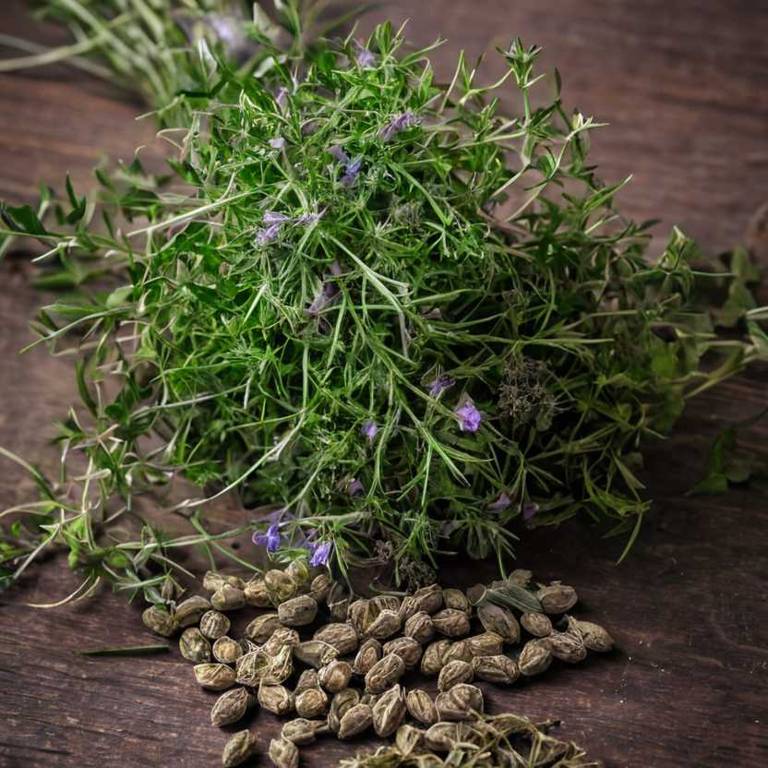Fireweed (Chamaenerion Angustifolia)
Information Reliability Score: 5/10
This score reflects the overall reliability of the information presented in this article. It is based on the quality of scientific evidence, accuracy of sources, and the transparency of references related to Chamaenerion angustifolia.
 Fireweed, scientifically known as Chamaenerion angustifolia, is a flowering plant commonly found in disturbed soils and along roadsides, known for its medicinal properties and adaptogenic qualities. It has been traditionally used for its anti-inflammatory and antimicrobial benefits, making it valuable in treating skin conditions, respiratory issues, and digestive ailments. In Native American and Siberian traditions, fireweed was used to soothe fevers, promote wound healing, and as a natural remedy for colds and sore throats. Today, it is gaining recognition in modern wellness practices for its potential to support immune function and reduce oxidative stress. One of its unique features is its distinctive reddish-purple flowers and its historical use as a food source during times of famine, highlighting its versatility and resilience.
Fireweed, scientifically known as Chamaenerion angustifolia, is a flowering plant commonly found in disturbed soils and along roadsides, known for its medicinal properties and adaptogenic qualities. It has been traditionally used for its anti-inflammatory and antimicrobial benefits, making it valuable in treating skin conditions, respiratory issues, and digestive ailments. In Native American and Siberian traditions, fireweed was used to soothe fevers, promote wound healing, and as a natural remedy for colds and sore throats. Today, it is gaining recognition in modern wellness practices for its potential to support immune function and reduce oxidative stress. One of its unique features is its distinctive reddish-purple flowers and its historical use as a food source during times of famine, highlighting its versatility and resilience.
FREE CHECKLIST
The Only 10 Herbs You Need to Heal 90% of Common Ailments.

Table of Contents
Scientific and Botanical Profile
Fireweed, with botanical name Chamaenerion angustifolia, is a flowering plant belonging to the family Onagraceae, known for its striking pink to red flowers and its widespread presence across various regions. Native to Europe, Asia, Scandinavia, Western Russia, North America, the Baltic States, and Alaska, it is commonly referred to by several names including Great Willowherb, Redstem Filaree, Bladder Campion, Common Fireweed, and Rosebay Willowherb. Morphologically, it is a herbaceous perennial with upright stems that often have a reddish tinge, alternate leaves that are lance-shaped and hairy, and clusters of showy pink or rose-purple flowers that bloom in late summer. This plant is often found in disturbed soils, along roadsides, and in open habitats, and it is noted for its ability to thrive in a variety of environmental conditions.History and Cultural Relevance
Fireweed was used by Indigenous peoples of North America and Siberia for centuries as a medicinal plant, valued for its healing properties and symbolic significance. In traditional medicine systems, it was employed to treat respiratory ailments, skin conditions, and as a general tonic to boost vitality, with its leaves and flowers harvested for teas and salves. Among the Tlingit and Haida peoples, fireweed held cultural importance, often appearing in stories and rituals, and was believed to have spiritual connections to the land and the elements. Its bright pink flowers also inspired folk traditions, including the use of its fibers for weaving and its seeds as a natural dye. Today, fireweed remains relevant in herbal medicine, with its anti-inflammatory and antioxidant properties still being studied, and it continues to symbolize resilience and renewal in both ecological and cultural contexts.Chemical Composition and Nutritional Profile
Fireweed contains a variety of bioactive compounds, including flavonoids, alkaloids, terpenes, and essential oils, which contribute to its medicinal properties. It is rich in antioxidants such as quercetin and kaempferol, which help neutralize free radicals and reduce oxidative stress in the body. The plant also provides essential nutrients like vitamin C, vitamin A, and minerals such as potassium and magnesium, supporting immune function and cellular health. These compounds work synergistically to exert anti-inflammatory, antimicrobial, and vasodilatory effects, making fireweed useful in traditional remedies for respiratory and skin conditions. Its complex chemical profile supports its historical use in herbal medicine for its healing and protective properties.Medicinal Properties and Health Benefits
Chamaenerion angustifolia has been traditionally used for its potent anti-inflammatory and antioxidant properties, which support the immune system and help combat oxidative stress. It is particularly beneficial for the cardiovascular system, as it may help lower blood pressure and improve circulation due to its high concentration of bioactive compounds like flavonoids and phenolic acids. Compared to similar herbs such as hawthorn or ginkgo biloba, chamaenerion angustifolia offers a more pronounced effect on reducing inflammation and may have a longer duration of action, making it a unique choice for chronic conditions. Its ability to support both the respiratory and circulatory systems sets it apart from many other herbal remedies. Overall, chamaenerion angustifolia stands out for its comprehensive health benefits and potential as a natural alternative to pharmaceutical treatments.Discover the 10 best health benefits of Fireweed.